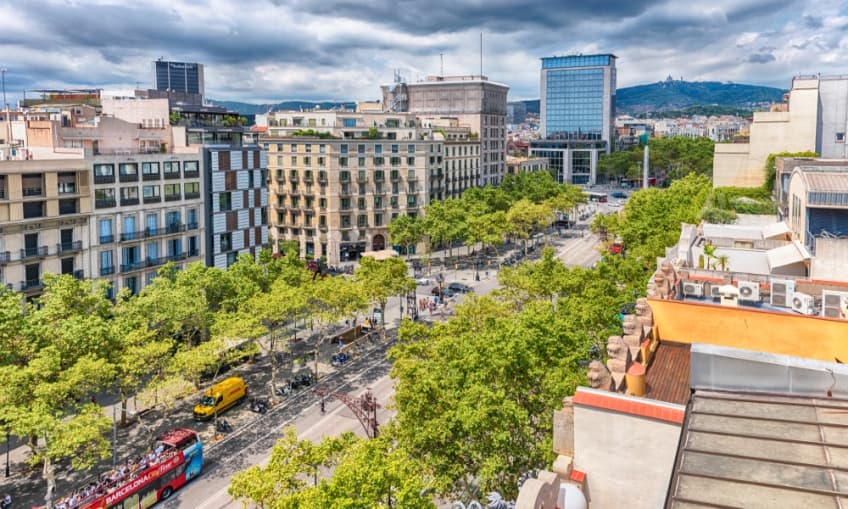
Paseo de Gracia (Barcelona)
Inaugurated in 1827, the Paseo de Gracia is the most famous main avenue in Barcelona because, along its 1,600-meter length and 61-meter section, it is the third most expensive shopping street in Spain. It has an infinity of commercial and tourist areas, restaurants and buildings of enormous patrimonial, artistic and tourist importance.
The Paseo de Gracia, configured and designed in a boulevard style, is located in a strategic part of the centre of Barcelona that was part of the Ensanche and that connects with Gracia street and Catalonia Square.
Its origins date back to 1821, when the City Council sought to display a large, wide avenue in the Parisian style where the aristocracy could travel in their luxurious wagons and steeds. It was to be a recreational and playful area full of cafes, restaurants, theatres and dance halls.
With the arrival of the 20th century, the Paseo de Gracia was consolidated thanks to the spectacular constructions of the modernist architects Gaudí, Sagnier and Puig i Cadafalch. They introduced a unique Barcelona style to its architecture that turned the avenue into a European meeting point. In addition, they merged it with the Ensanche project devised by Idelfonso Cerdá during the 19th century.
Among the many buildings that can be admired along the Paseo de Gracia are the Milá House, the Amatler House, the Lleó Morera House and the famous “bancs-fanals de trencadís”, all of which can be seen along the avenue. Paseo de Gracia also helped to consolidate what was called the Catalan National Identity thanks to the fact that both its architecture and its commercial and tourist dynamism are unique and unrepeatable, not only in Barcelona, but among the vast majority of Spanish cities.
The Paseo de Gracia, configured and designed in a boulevard style, is located in a strategic part of the centre of Barcelona that was part of the Ensanche and that connects with Gracia street and Catalonia Square.
Its origins date back to 1821, when the City Council sought to display a large, wide avenue in the Parisian style where the aristocracy could travel in their luxurious wagons and steeds. It was to be a recreational and playful area full of cafes, restaurants, theatres and dance halls.
With the arrival of the 20th century, the Paseo de Gracia was consolidated thanks to the spectacular constructions of the modernist architects Gaudí, Sagnier and Puig i Cadafalch. They introduced a unique Barcelona style to its architecture that turned the avenue into a European meeting point. In addition, they merged it with the Ensanche project devised by Idelfonso Cerdá during the 19th century.
Among the many buildings that can be admired along the Paseo de Gracia are the Milá House, the Amatler House, the Lleó Morera House and the famous “bancs-fanals de trencadís”, all of which can be seen along the avenue. Paseo de Gracia also helped to consolidate what was called the Catalan National Identity thanks to the fact that both its architecture and its commercial and tourist dynamism are unique and unrepeatable, not only in Barcelona, but among the vast majority of Spanish cities.
Location
Civil Buildings in Barcelona
Religious Buildings in Barcelona
Museums in Barcelona









